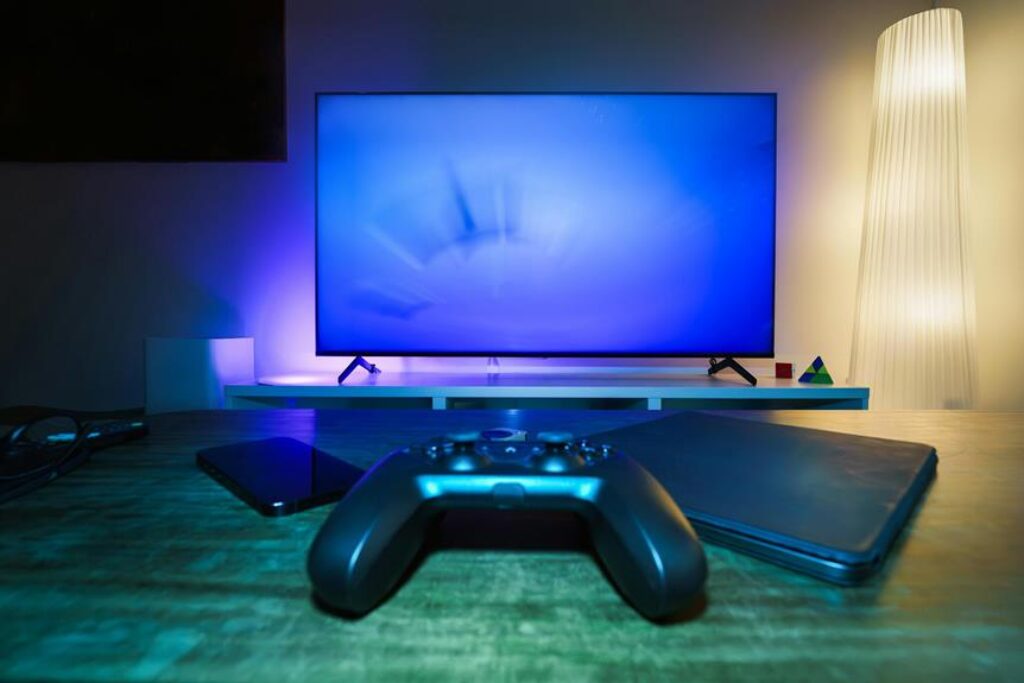
If you’re contemplating using a TV instead of a gaming monitor, there are some key factors to consider. While TVs offer certain advantages such as larger screens and advanced display technologies, they also come with drawbacks like higher input lag. As you weigh the pros and cons of each option, it’s essential to think about how your choice might impact your gaming experience. Stay tuned to discover the nuances that could influence your decision on whether a TV can truly replace a gaming monitor for your gaming setup.
TV Vs Gaming Monitor: Features Comparison
Wondering how a TV stacks up against a gaming monitor in terms of features for your gaming setup?
When it comes to size, TVs generally offer larger screens compared to gaming monitors. This can provide a more immersive gaming experience, especially for single-player games where you can appreciate the detailed graphics.
However, gaming monitors typically have faster response times and higher refresh rates, which are crucial for competitive gaming. The response time affects how quickly each pixel can change color, reducing motion blur and ghosting. High refresh rates, like 144Hz or even 240Hz, contribute to smoother gameplay by displaying more frames per second.
Additionally, gaming monitors often come with features like G-Sync or FreeSync for eliminating screen tearing and stuttering. On the other hand, some modern TVs also support these technologies.
Ultimately, the choice between a TV and a gaming monitor depends on your preferences and priorities in terms of screen size, response time, refresh rate, and additional features.
Pros of Using a TV for Gaming
Using a TV for gaming amplifies the visual experience with its larger screen size and immersive display capabilities. The expansive screen size of a TV allows you to see more details in your games, making the gaming experience more engaging and immersive. With a TV, you can enjoy vibrant colors, deep contrasts, and sharp images, enhancing the overall visual quality of your games.
Furthermore, TVs often come equipped with advanced display technologies such as HDR (High Dynamic Range) and high refresh rates, which can further enhance the visual fidelity and smoothness of gameplay. These features can make games look more realistic and dynamic, pulling you deeper into the gaming world.
Additionally, many modern TVs offer various connectivity options, including multiple HDMI ports and USB inputs, allowing you to easily connect multiple gaming consoles, PCs, or other devices simultaneously. This versatility can make it convenient to switch between different gaming platforms without constantly swapping cables.
Cons of Using a TV for Gaming
While gaming on a TV offers various advantages, there are notable drawbacks to consider as well. One major con is input lag. TVs generally have higher input lag compared to gaming monitors, which can affect your gaming experience, especially in fast-paced games where quick reflexes are crucial.
Another issue is screen size. While bigger screens may seem appealing, they can make it harder to see all parts of the display at once, leading to potential missed details or enemies sneaking up on you. Additionally, TVs often have lower pixel density than monitors, which can result in less sharp and clear images.
Furthermore, most TVs lack features like high refresh rates and adaptive sync technologies commonly found in gaming monitors, which can impact smoothness and responsiveness during gameplay. The overall display quality of a TV may also not be as optimized for gaming as a dedicated gaming monitor, with potential issues like motion blur or ghosting.
Lastly, the positioning of ports on TVs may not be as convenient for gaming setups compared to monitors, leading to cable management challenges.
Tips for Optimizing TV Gaming Setup
To enhance your gaming experience when using a TV as a monitor, optimizing your setup can make a significant difference. Start by adjusting your TV’s display settings. Select the ‘Game Mode’ if available to reduce input lag and improve responsiveness. Disable any post-processing effects like motion smoothing or noise reduction to minimize delays.
Consider connecting your gaming console or PC to the TV using an HDMI cable for the best image quality and performance. Make sure to enable HDR or any other advanced features supported by your TV to enhance visuals.
Positioning is crucial for an optimal gaming setup. Place your TV at eye level to prevent neck strain and ensure comfortable viewing. Reduce glare by adjusting lighting in the room or using curtains.
Invest in a quality sound system or gaming headset for immersive audio. Adjust the sound settings on your TV to prioritize game audio for a more engaging experience.
Lastly, keep your TV and gaming console firmware up to date to access the latest features and improvements. By following these tips, you can maximize your gaming experience when using a TV as a monitor.
Trending Products














